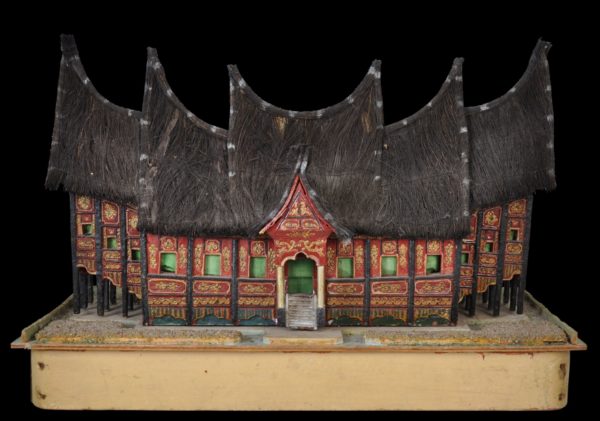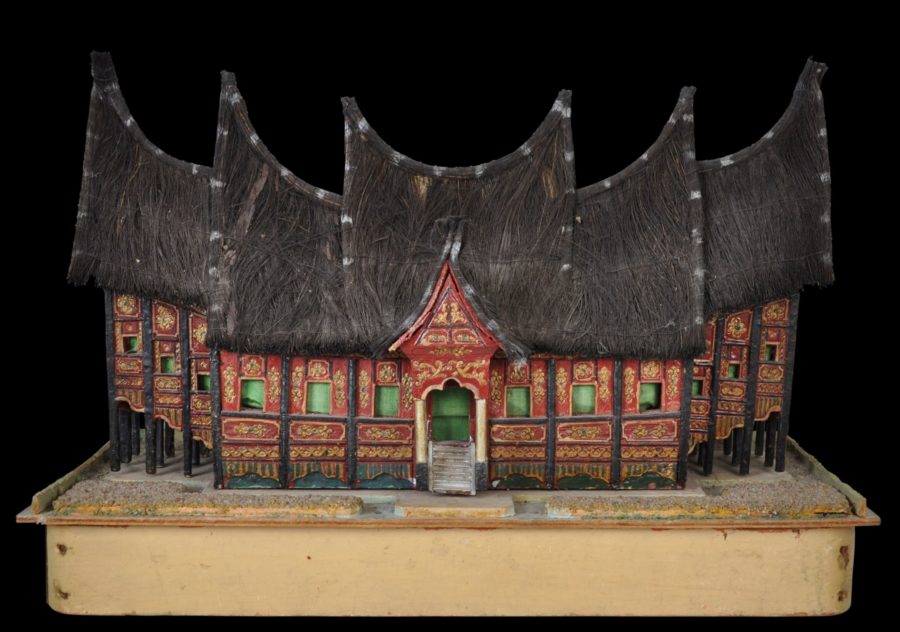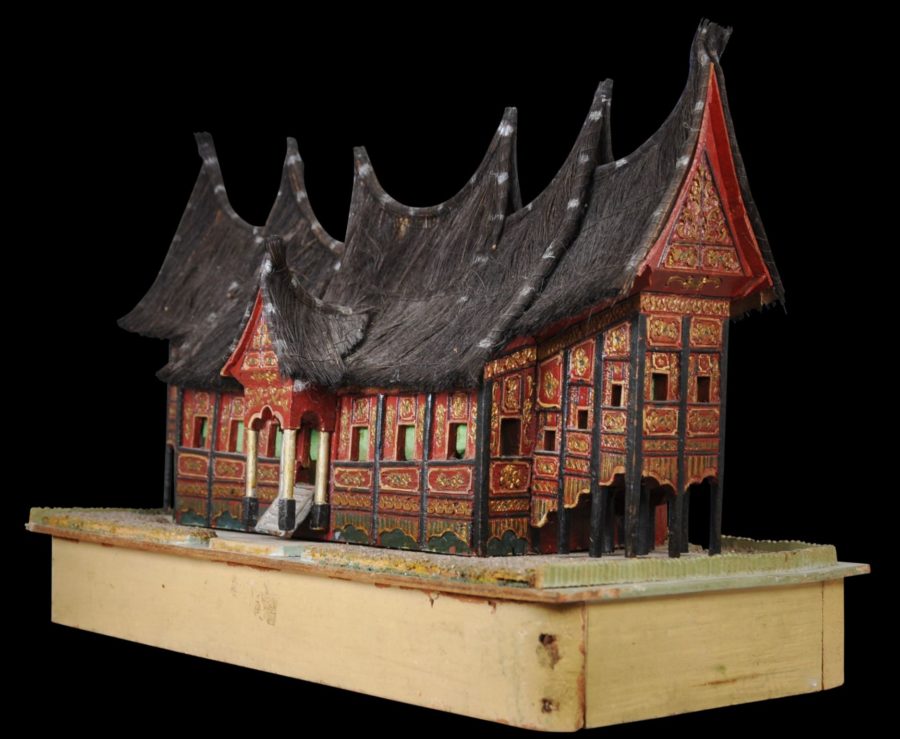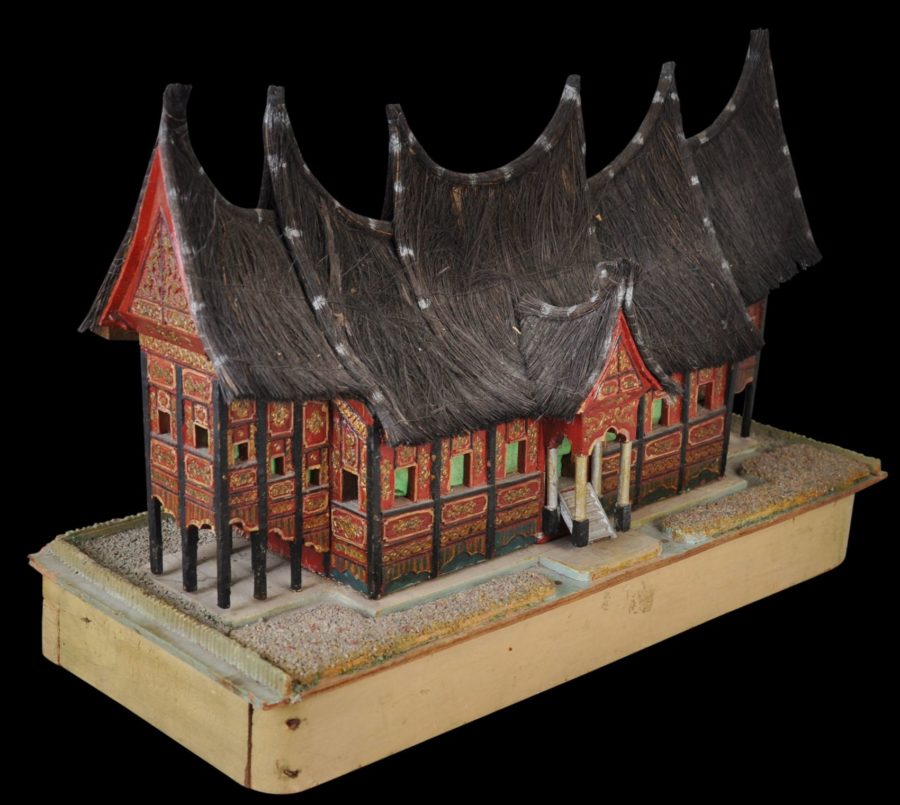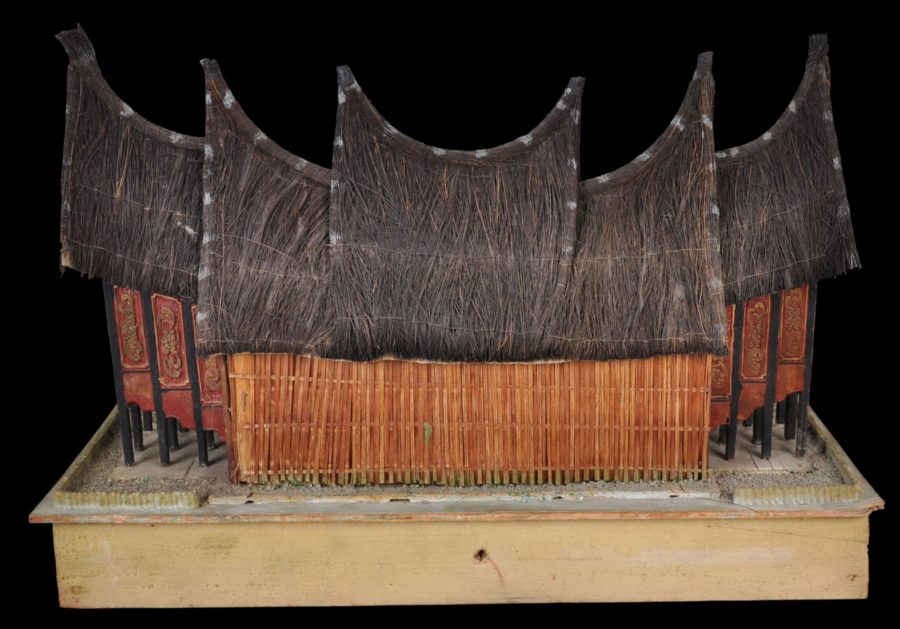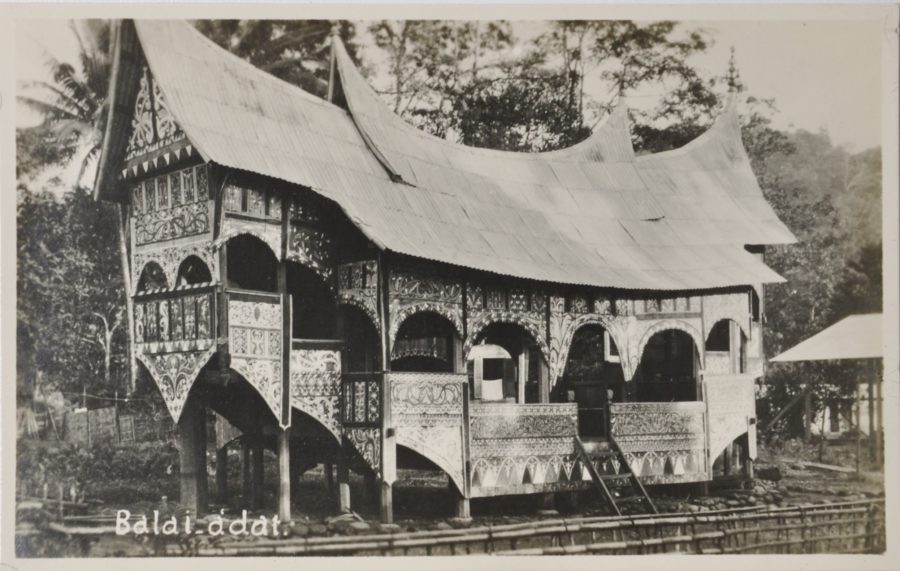This fine model of an important, traditional Minangkabau house from South Sumatra dates to the first part of the 20th century and would have been made in the Dutch East Indies (now Indonesia.)
Such a house is known as a rumah gadang (‘big house’) or a rumah gonjong (‘house with a curved roof’) in Indonesian or a roemah balah boeboeng (‘soaring or rising house’) in the Minangkabau dialect.
The model is faithfully rendered, with its stilts; gabled, concave roof; and intricately carved and decorated walls. The walls and other details are carved from light wood and the roof is of sugar palm fibre (arenga pinnata).
Such traditional houses were large buildings for housing the members of an extended family. They were raised on piles and typically, were around 22 metres long, 8 metres wide and elevated around 2 metres from the ground. The main hall known as the tanga rumah is the central feature of such a house and the sleeping chambers lined the back of the house.
The roof of such houses is particularly prominent and is based on the horns of a buffalo. Buffalo-horn imagery is a feature of other groups in Southeast Asia too on account of the importance of the buffalo to rice cultivation.
The carved exterior walls are exquisitely carved and decorated in red and gold paints and suggest Chinese influence – this not being surprising given the significant, old, local Chinese communities in the area and the trading and migratory nature of both the Chinese from southern China and the Minangkabau themselves.
The larger, more decorated and more complex a house, the greater the family’s presumed status and wealth. High ranking families had hoses that were significantly larger than those of commoners.
See Benitez-Johannot (2007, p. 72) for a related model of a Minangkabau house that dates to the first part of the 20th century and is in the National Museum, Jakarta.
The last image shows an old postcard which illustrates a ‘balai adat’ (‘traditional hall’) near Padang.
The example here is in fine condition with incredible attention to detail. The carving and colouring of the external walls is very precise and fine. The model sits on a wooden platform. The model dates to the Dutch colonial period in Indonesia.
References
Benitez-Johannot, P. (ed.), Paths of Origins: The Austronesian Heritage in the Collections of the National Museum of the Philippines, the Museum Nasional Indonesia and the Netherlands Rijksmuseum voor Volkenkunde, ArtPostAsia, 2007.
Summerfield, A., & J., Walk in Splendor: Ceremonial Dress and the Minangkabau, UCLA Fowler Museum of Cultural History, 1999.


